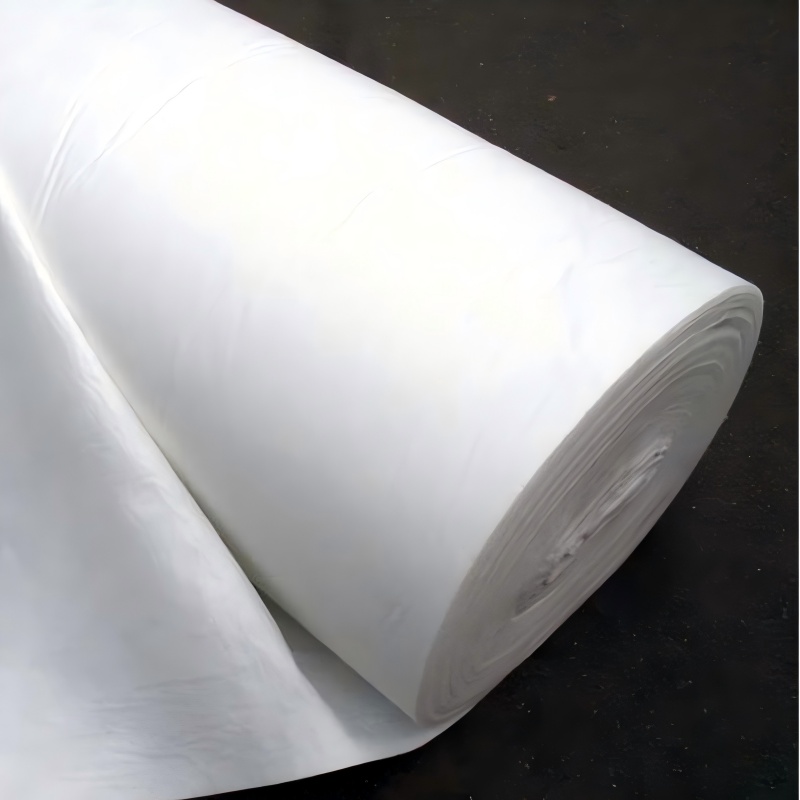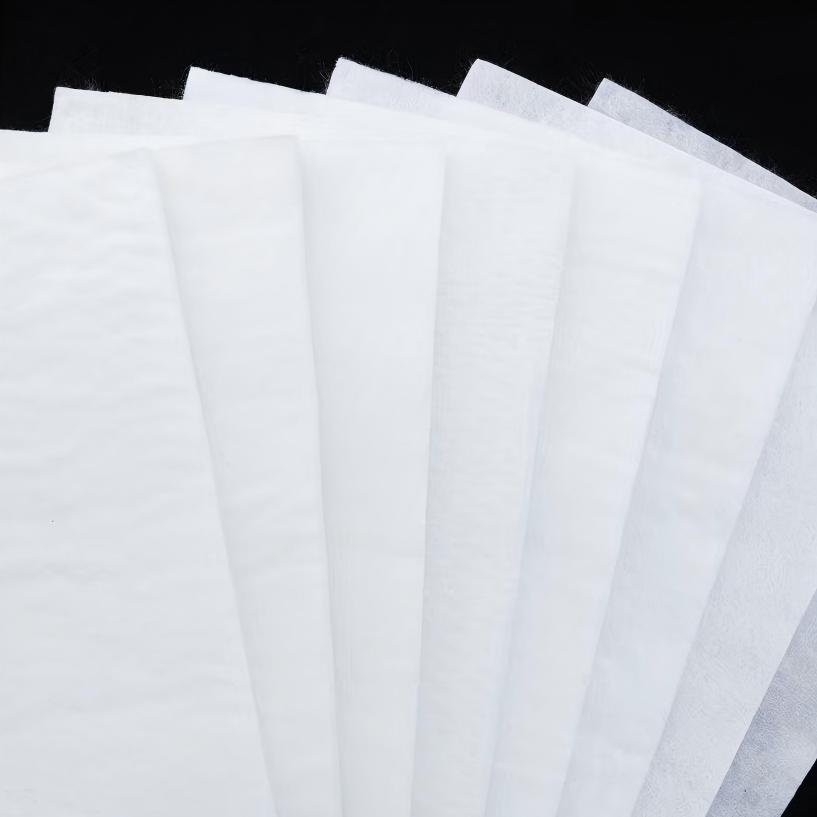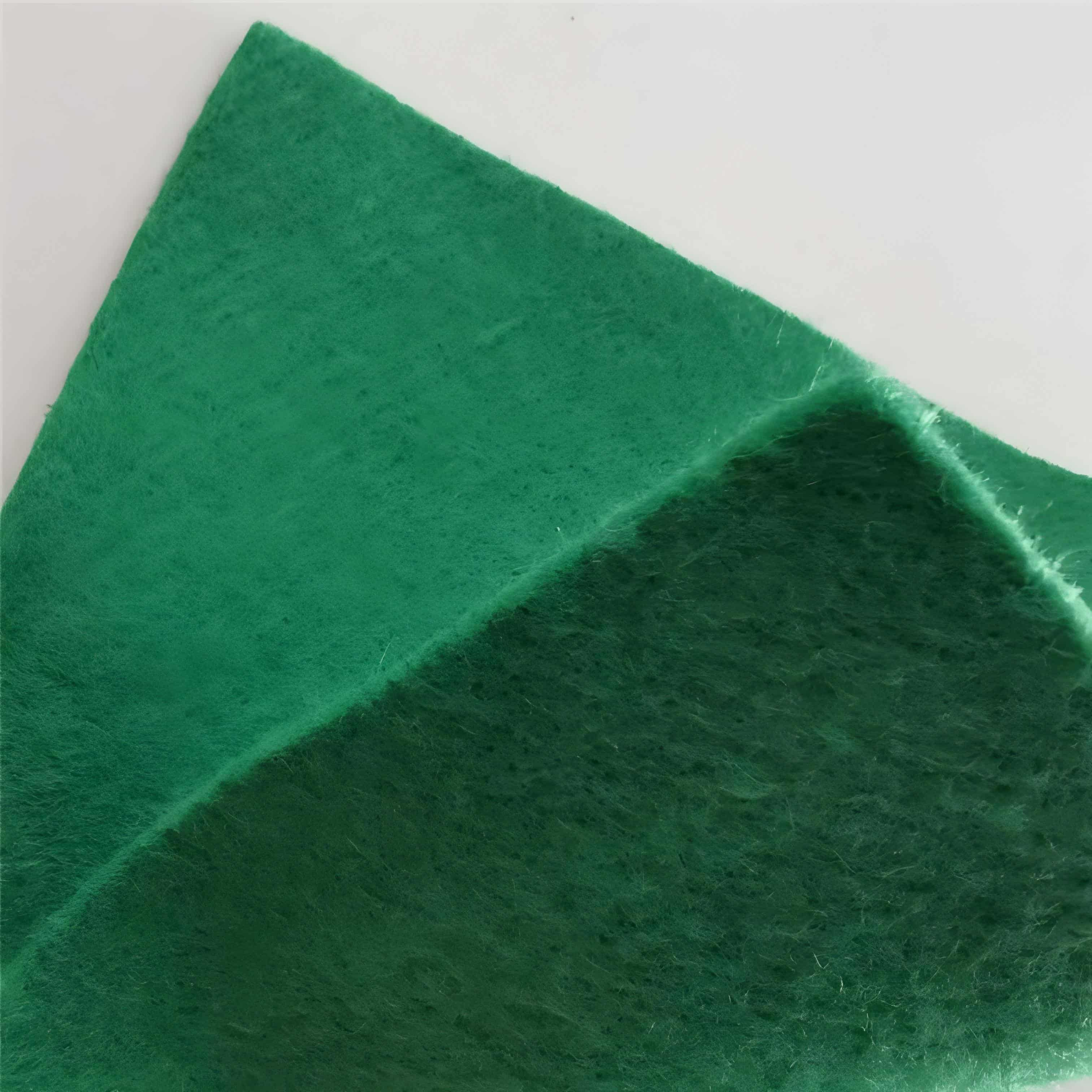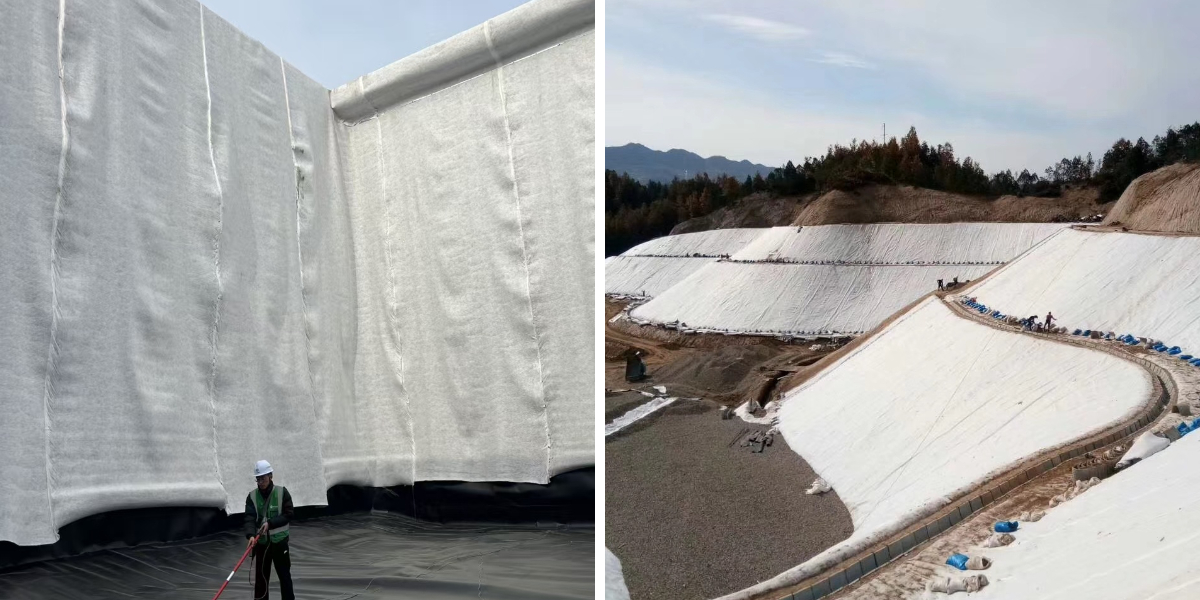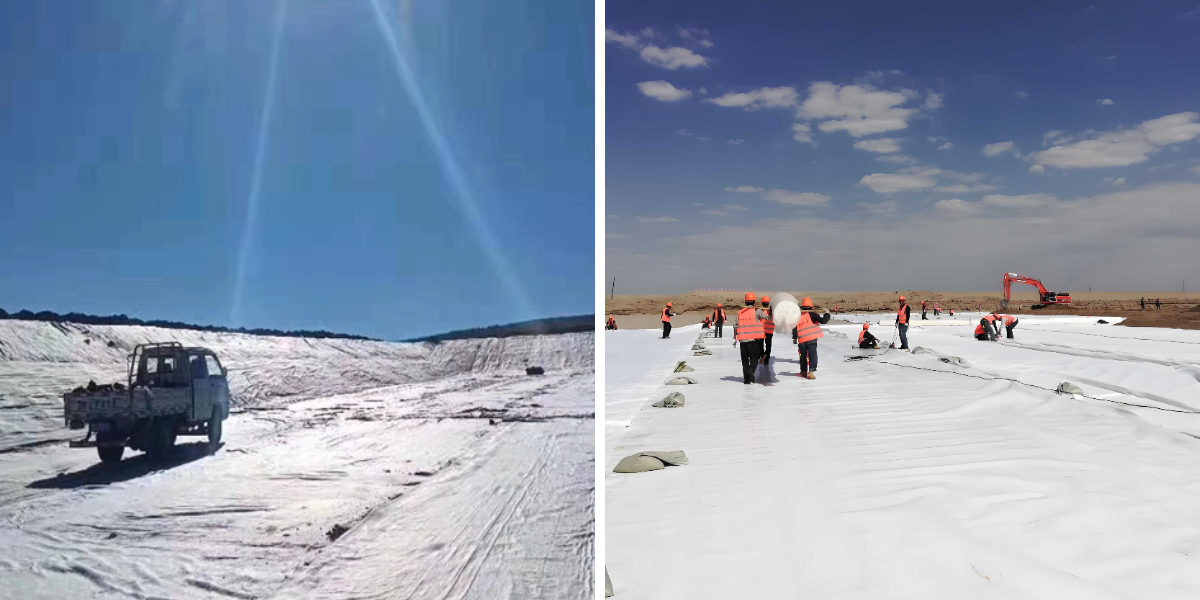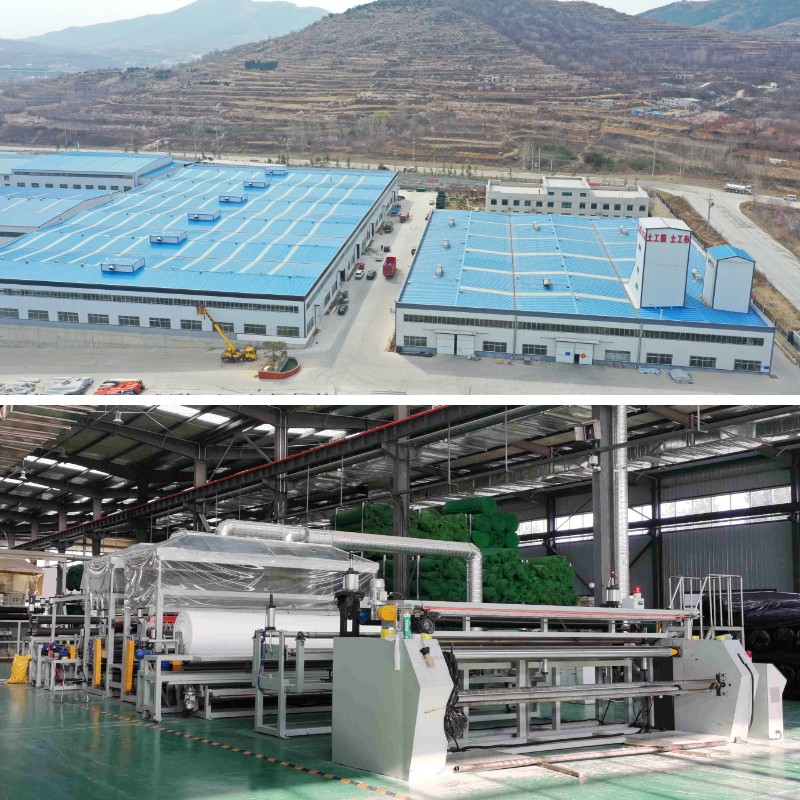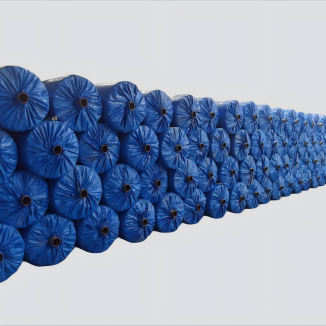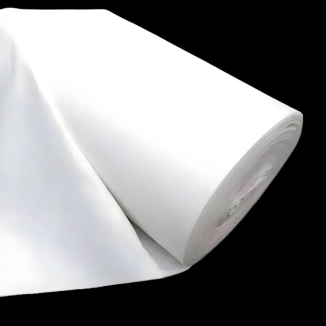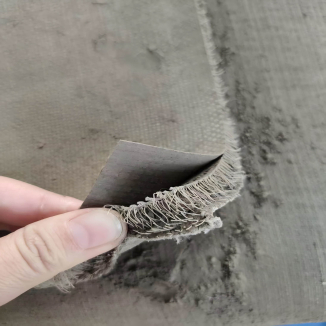Geo Fabric Behind Retaining Wall
1. Reinforcement to resist lateral pressure: Enhance the overall integrity of the soil behind the retaining wall, disperse lateral pressure, reduce the risk of wall sliding and overturning, and stabilize the structure.
2. Water filtration and loss prevention: Filter fine soil particles, allow water to be discharged, prevent soil loss from forming voids, and ensure smooth drainage.
3. Isolation and wear prevention: Separate different backfill materials to prevent mixing; Protect the wall from sharp particle wear and extend its lifespan.
4. Easy to lay and adaptable: flexible and adaptable to irregular contours, suitable for various types of retaining walls, easy and efficient construction.
Products Introduction:
GeoFabric Behind Retaining Wall is a high-performance geosynthetic material designed specifically for the backfill area behind retaining wall projects. Made from polypropylene (PP) or polyester (PET) filaments, it is produced through needle-punched nonwoven or woven processes. Some products are treated with anti-aging and corrosion treatments to adapt to complex environments. Its core function is to be laid between the retaining wall body and the backfill behind it. By providing three major functions: reinforcement, filtration and drainage, and isolation and protection, it addresses structural instability behind the retaining wall caused by excessive earth pressure, soil erosion, and poor drainage. It provides long-term stability for various retaining walls, including gravity, cantilever, and reinforced earth types. It is a key supporting material for improving the bearing capacity and service life of retaining walls.
Product Features:
1. Directed reinforcement distributes lateral pressure and prevents overturning: Utilizing a high-density interwoven fiber structure, it achieves longitudinal and transverse tensile strengths of 30-80 kN/m and excellent tear resistance. After installation, it forms a "composite load-bearing system" with the backfill behind it, effectively distributing lateral soil pressure and reducing slippage, cracking, or overturning of the retaining wall due to uneven pressure. It is particularly suitable for complex load-bearing scenarios behind retaining walls, such as high fill and soft soil foundations.
2. Precise filtration to prevent erosion and ensure drainage: The fabric's pore size (0.05-0.2mm) is scientifically designed to filter fine particles (such as clay and silt) in the backfill, preventing soil erosion and the formation of cavities. It also allows rainwater and groundwater to penetrate freely, reducing pore water pressure in the backfill, preventing "piping," and ensuring smooth drainage behind the retaining wall.
3. Isolation and protection, reducing wear and extending service life: It effectively separates the retaining wall's main structure (e.g., concrete, stone) from the backfill material behind it, preventing sharp debris from directly abrading the wall surface. It also separates backfill materials of different grades (e.g., sand and clay), preventing material mixing that could reduce bearing capacity, minimizing structural wear and extending the overall service life of the retaining wall.
4. Highly adaptable, easy to install, and cost-effective: Its flexible texture and lightweight (100-400g/m²) allow it to be flexibly cut and spliced to the contours of the retaining wall (e.g., curved or zigzag shapes), allowing it to fit irregular base layers. It eliminates the need for specialized heavy equipment, resulting in highly efficient installation. It is suitable for a variety of retaining wall types, including gravity and cantilever retaining walls, and can shorten construction cycles by 20%-30% compared to traditional retaining materials.
Product Parameters:
project | metric | ||||||||||
Nominal strength/(kN/m) | |||||||||||
6 | 9 | 12 | 18 | 24 | 30 | 36 | 48 | 54 | |||
1 | Longitudinal and transverse tensile strength / (kN/m) ≥ | 6 | 9 | 12 | 18 | 24 | 30 | 36 | 48 | 54 | |
2 | Maximum elongation at maximum load in longitudinal and transverse directions/% | 30~80 | |||||||||
3 | CBR top penetration strength /kN ≥ | 0.9 | 1.6 | 1.9 | 2.9 | 3.9 | 5.3 | 6.4 | 7.9 | 8.5 | |
4 | Longitudinal and transverse tearing strength /kN | 0.15 | 0.22 | 0.29 | 0.43 | 0.57 | 0.71 | 0.83 | 1.1 | 1.25 | |
5 | Equivalent aperture O.90(O95)/mm | 0.05~0.30 | |||||||||
6 | Vertical permeability coefficient/(cm/s) | K× (10-¹~10-), where K=1.0~9.9 | |||||||||
7 | Width deviation rate /% ≥ | -0.5 | |||||||||
8 | Unit area mass deviation rate /% ≥ | -5 | |||||||||
9 | Thickness deviation rate /% ≥ | -10 | |||||||||
10 | Thickness coefficient of variation (CV)/% ≤ | 10 | |||||||||
11 | Dynamic perforation | Puncture hole diameter/mm ≤ | 37 | 33 | 27 | 20 | 17 | 14 | 11 | 9 | 7 |
12 | Longitudinal and transverse fracture strength (grab method)/kN ≥ | 0.3 | 0.5 | 0.7 | 1.1 | 1.4 | 1.9 | 2.4 | 3 | 3.5 | |
13 | Ultraviolet resistance (Xenon arc lamp method) | Longitudinal and transverse strength retention rate% ≥ | 70 | ||||||||
14 | Ultraviolet resistance (fluorescence UV lamp method) | Longitudinal and transverse strength retention rate% ≥ | 80 | ||||||||
Product Applications:
1. Behind Gravity Retaining Walls: In masonry/concrete gravity retaining wall projects, such as municipal road slopes and residential walls, this material is laid between the wall and the backfill. Its filtration function prevents soil loss caused by rainwater erosion. Its reinforcement properties also disperse lateral pressure, preventing cracks or tilting in the wall due to long-term pressure. It is particularly suitable for use in rainy areas.
2. Behind Cantilever/Buttress Retaining Walls: Used behind reinforced concrete cantilever retaining walls in large parking lots and industrial parks, it is primarily laid at the toe, heel, and layered backfill areas to isolate the backfill from the wall foundation and prevent fine particles from clogging drainage holes. It also strengthens the integrity of the soil behind it, reduces the stress on the cantilever structure, and reduces the risk of wall cracking.
3. Behind Reinforced Earth Retaining Walls: Serving as the "auxiliary reinforcement" of reinforced earth retaining walls, it is used in conjunction with wall panels and tie bands. It is laid in the layered backfill soil to further enhance the synergy between the soil and reinforcement, improving the overall shear strength behind the retaining wall. It is suitable for use in high-load-bearing conditions such as highway and railway slopes.
4. Behind Ecological Retaining Walls: In ecological retaining wall projects such as grass-planted concrete and ecological gabions, it is laid between the ecological material and the backfill soil. It not only ensures soil stability through filtration, preventing soil erosion and impacting vegetation growth, but also prevents fine soil from clogging the pores of the ecological material, maintaining water and air permeability behind the retaining wall, achieving a balance between ecological benefits and structural stability.
Geo Fabric Behind Retaining Wall focuses on key scenarios behind retaining walls. Leveraging its core advantages of "reinforcement for anti-tilt, filtration and drainage, isolation and protection, and ease of construction," it precisely addresses the pain points of retaining wall projects, including excessive lateral pressure, soil loss, and drainage blockage. Whether used for foundation protection of traditional gravity retaining walls or for reinforcing high-fill retaining walls in complex terrain, its scientific performance design creates a reliable "protective barrier" behind retaining walls. Combining functionality and affordability, this product not only enhances retaining wall structural stability, but also shortens construction cycles and reduces maintenance costs. It is an ideal supporting material for ensuring safety and extending the life of various retaining wall projects.


